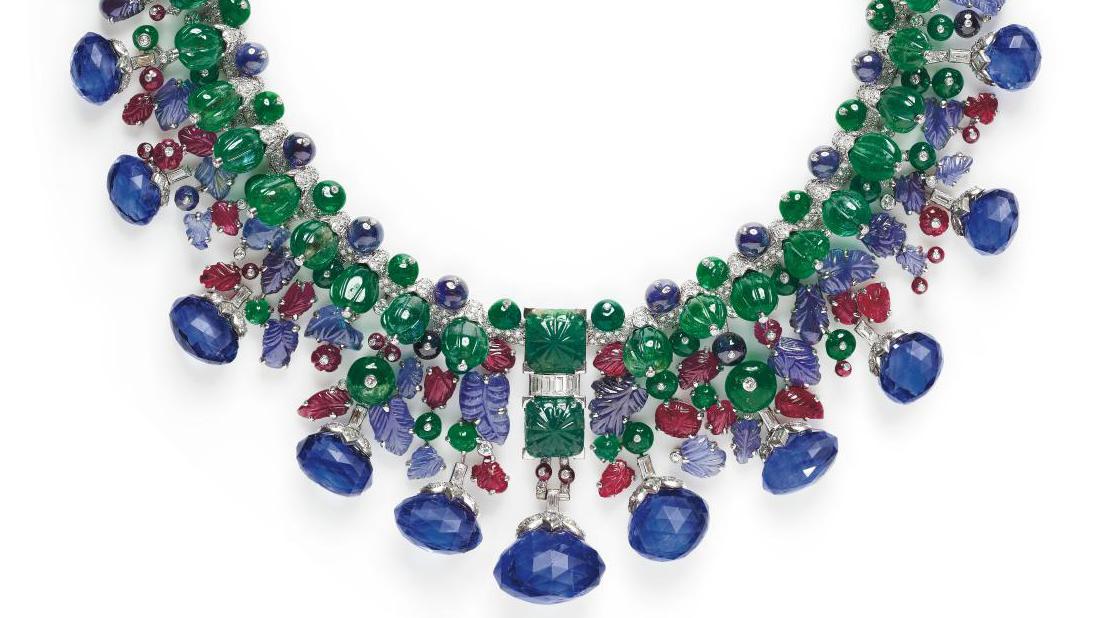Created about 40 years ago, the famous jeweler and watchmaker’s collection is a major resource for art historians and a source of inspiration for the brand’s designers.
Hindu necklace, Cartier, Paris, 1936, modified in 1963, l. 43 cm/16.92 in. (open), platinum, white gold, marquise-cut, baguette-cut and old-cut round diamonds, 13 briolette-cut sapphires for a total weight of 146.90 ct, two 50.80 and 42.45 ct engraved leaf-shaped sapphires, engraved square emeralds, engraved leaf-shaped rubies
A stone’s throw from Lake Geneva and its famous fountain, the Cartier Collection lies tucked away in a safe at an address known only to insiders. Now owned by the Swiss luxury goods group Richemont, its 3,000 outstanding historic pieces tell the story of a French family whose bold designs became all the rage with maharajahs and the crowned heads of old Europe before winning over movie stars and top models.
Panther clip brooch , Cartier , Paris, 1949, platinum, white gold, 8/8-cut diamonds, two pear-shaped yellow diamonds, a 152.35 ct Kashmir sapphire cabochon, sapphire cabochons, sold to the Duke of Windsor
In the early 1980s, Cartier took a bold step in deciding to create a collection by purchasing pieces at auctions or from dealers and private individuals.
“A Living Organism”
“The collection, whose pieces can only be seen during exhibitions at museums and cultural institutions, has existed as such since 1983,”…
com.dsi.gazette.Article : 48828
This article is for subscribers only
You still have 85% left to read.
